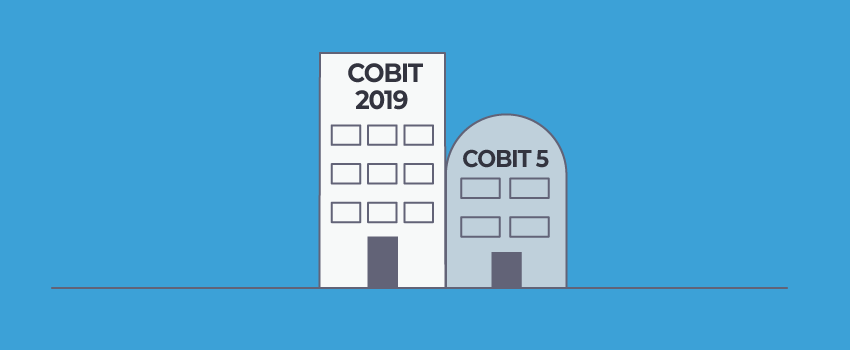
The Changing Drivers for ITSM Tool Selection
The criteria used for IT service management (ITSM) tool selection have almost remained static for the last thirty years. This traditional approach of creating a list of desired features and functions, with weighted scoring still prevails for most organizations. Albeit, there might be increased attention on expected value (from the new ITSM tool) in addition to the available features and cost.
But will this still hold true over the next few years? Especially when the various changes we see in the ITSM world are considered. To help, this blog proposes three key factors, or change drivers, that are likely to “move the goal posts” for ITSM tool selection and will dominate the requirements for ITSM tools.
This blog by @Joe_the_IT_Guy proposes 3 key factors that are likely to 'move the goal posts' for #ITSM tool selection & will dominate the requirements for ITSM tools. #servicedesk Click To TweetTraditional ITSM tool requirements
While selecting the right ITSM tool has never been easy, the process wasn’t rocket science. Your organization would create a list of required features and functions, usually based on ITIL best practices. There would also be standard non-functional requirements such as cost, ease of use, speed, ITSM tool vendor support capabilities, security, reporting and analytics, and vendor relationship quality.
For many organizations, the required features and functions – and the ability of the ITSM tool to enable ITIL-aligned practices – have always been the priority. After all, they were why the ITSM tool was being procured!
But are we about to see this change, with three ITSM trends making their presence increasingly known in ITSM tool selection processes? And could we reach a point where they make the difference between whether an ITSM tool is selected rather than a score based on the level of features and functions? There’s no data on this yet, but hopefully, this blog makes a compelling argument for their increasing importance to ITSM tool selection decisions.
Are we about to see a change in traditional #ITSM tool requirements? Asks @Joe_the_IT_Guy, with 3 trends making their presence increasingly known in ITSM tool selection processes? #servicedesk Click To TweetThe changing drivers for ITSM tool selection
In the future, the ITIL-aligned features and functions offered by an ITSM tool could be considered “table stakes.” They are, of course, what makes an ITSM tool an ITSM tool. Still, with ITIL used as a blueprint for so many ITSM tools over the last three decades, they are increasingly less of a differentiator (other than for high-maturity organizations). It’s a little like choosing a tin of white paint, where you know you’ll end up with a white wall, ceiling, door, or something else, but other factors such as durability (and ease of cleaning), customer reviews, the number of coats required, or even the drying time can make or break the paint purchasing decision.
So what likely factors will influence ITSM tool purchase decisions in the future? There will, of course, be organization-specific requirements that can sink a tool’s suitability. As can the price. But watching how the ITSM tool market is changing, the following three factors are – in my opinion – likely to be increasingly crucial to ITSM tool selection, potentially contributing more to purchasing decisions than the aforementioned “table stakes” of ITSM features and functions:
- UX/UI improvements
- Enterprise service management use
- Intelligent automation capabilities.
Each of these is covered in more detail below.
What likely factors will influence #ITSM tool purchase decisions in the future? UX, ESM, & intelligent #automation says @Joe_the_IT_Guy. Find out more here. #servicedesk Click To TweetUX/UI improvements
Organizations – or their employees – increasingly make decisions about ITSM tool selection “with their eyes.” The effects of consumerization that were well documented a decade ago continue to drive employee expectations of corporate IT systems. But this extends beyond aesthetics, i.e. the user interface (UI), into usability. This can be considered the user experience (UX) or employee experience, where ease of use significantly affects employee productivity and how employees feel about their role, not just the ITSM tool.
Service providers, i.e. the employees who use the ITSM tool to serve and support others (whether in IT or another business function), need the ITSM tool to help and not hinder them. For service receivers, the quality of the IT services and support they receive can also significantly impact their productivity and business operations and outcomes. So it’s understandable that having all the features and functions in the world isn’t helpful if the ITSM tool isn’t easy to use.
Enterprise service management use
A decade ago, enterprise service management was only just starting to seep into the collective consciousness of ITSM practitioners, and most non-IT leaders were unaware of the benefits of digital enablement, let alone the opportunity of enterprise service management.
The interest in enterprise service management started to change in the latter half of the 2010s, then the global pandemic accelerated the execution of digital transformation strategies and highlighted the power of enterprise service management in providing a ready-built platform for digital workflow enablement.
So in the future, a legitimate question that organizations will ask is, “Do we need an ITSM tool to enable IT and ITSM, or do we need one to enable the business and digital enablement across business functions?” At some point, I believe that the ability and ease of using the corporate ITSM tool across the organization will become more critical than the ITSM tool delta when assessing ITSM tools.
At some point, I believe that the ability and ease of using the corporate #ITSM tool across the org will become more critical than the ITSM tool delta when assessing ITSM tools. - @Joe_the_IT_Guy #servicedesk Click To TweetIntelligent automation capabilities
In many ways, all of these drivers overlap. For example, UX/UI improvements help with enterprise service management, and intelligent automation helps with both UX/UI improvements and enterprise service management.
It has long been inevitable that using artificial intelligence (AI)-enabled capabilities in ITSM tools would help improve ITSM capabilities and enterprise service management as a result. Many of these capabilities are already here and the recent interest and growth in ChatGPT use only adds AI-enabled opportunities to improve IT operations and outcomes.
While the reality is that these capabilities will eventually become embedded within ITSM tools and considered the norm, in the short term, I believe that they will be a significant differentiator in the ITSM tool selection process. Not having intelligent automation related to workflows and analytics, in particular, will be seen as a deal killer for ITSM tools.
In this blog, @Joe_the_IT_Guy gives his view on where the #ITSM tool selection process will head over the next few years. #servicedesk Click To TweetSo, that’s what I think about where the ITSM tool selection process will head over the next few years. There might be other change drivers, but these three have already started to change the tools, and I believe they will change the tool selection process even more.
What do you think? Please let me know in the comments.






